How to make an omelette
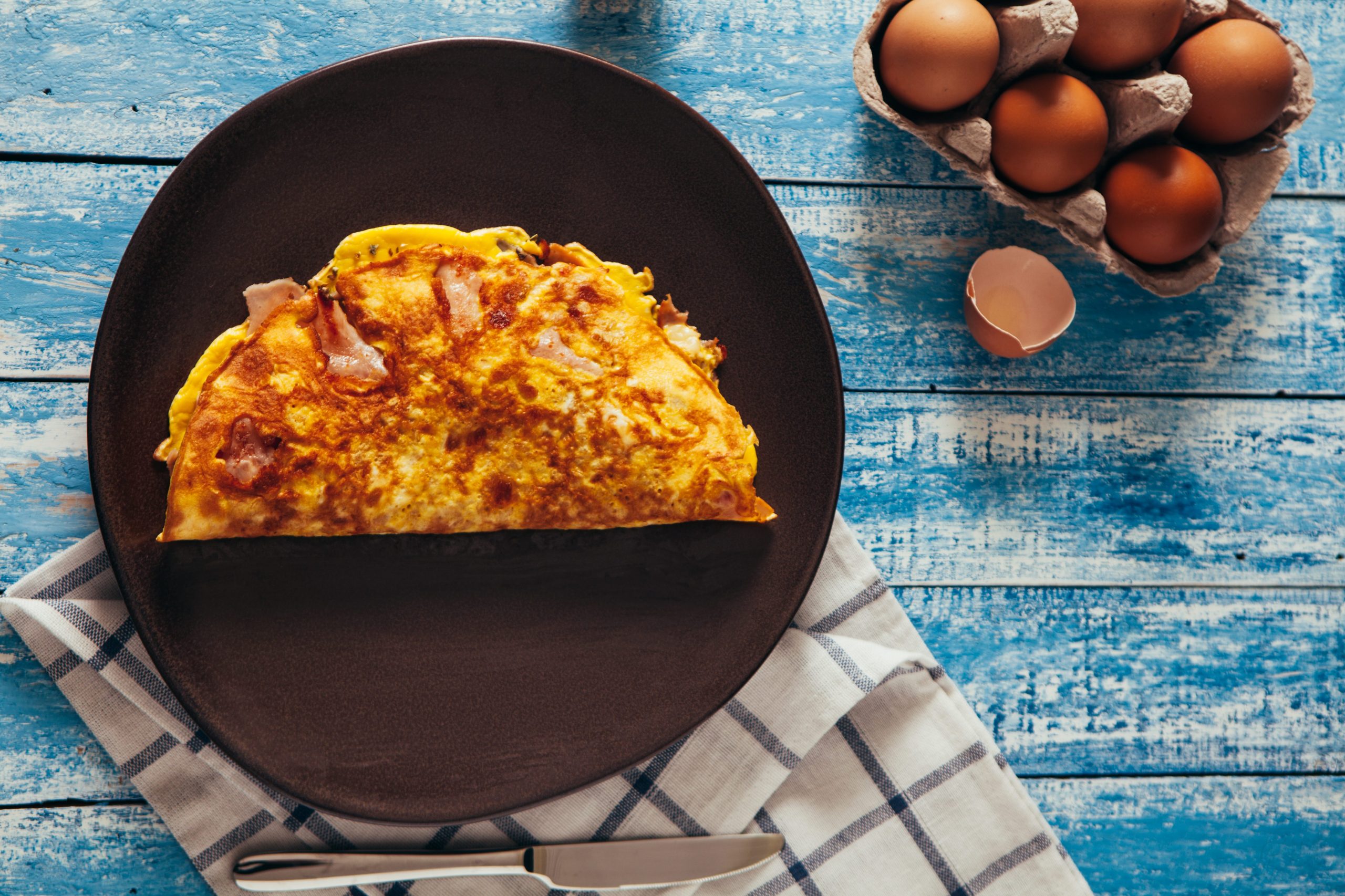

Find out everything you need to know about making an omelette including which eggs to use, whether to opt for butter or oil and how to add fillings...
An omelette, or omelet, is a dish made from lightly whisked eggs that are seasoned and quickly fried in a pan.
They are often filled with vegetables, infused with herbs or simply topped with heaps of Cheddar cheese.
This versatile dish can be served throughout the day but it's most popular as a savoury breakfast option.
In this article, we look at the best way to make an omelette, what to serve with it as well and offer our most valuable cooking tips.
What is the best size pan to use to make an omelette? How to make an omelette Omelette pairings What is the difference between an omelette and a Spanish omelette? What is the difference between an omelette and a frittata? Top tips for making an omelette Which eggs are best for making an omelette? Is butter or oil best for making an omelette? Can you use duck eggs to make an omelette? How to avoid making a runny omelette
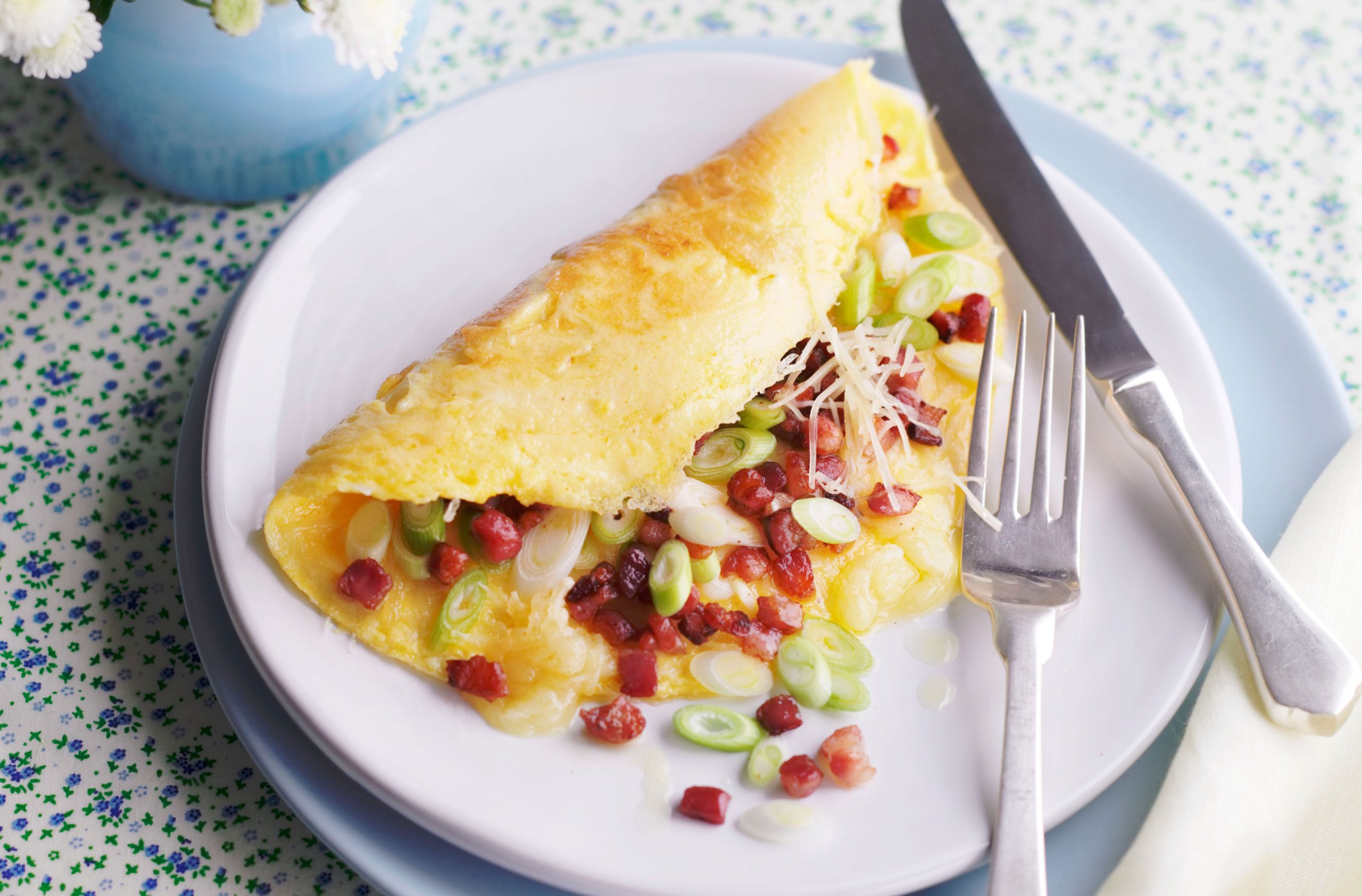
What is the best size pan to use to make an omelette?
The best size pan will depend on how many people you want to serve and the style you prefer.
GoodtoKnow Newsletter
Parenting advice, hot topics, best buys and family finance tips delivered straight to your inbox.
A pan with a larger diameter will allow the mixture to spread out thinly and cook far quicker. The edges may even turn a little crispy which some people aim for.
If you prefer a thicker, fluffier omelette it’s best to use a small frying pan.
Ideally, your pan should be suitable for use on the hob and in the oven. This can be useful for keeping it warm if you haven’t finished prepping the sides and it’s also good if you want to cook it fully through for a firm texture.
A 20cm frying pan is a nice size for single-serve omelettes and frittatas for two. But if you only want to invest in one frying pan, we’d recommend going for a 24cm one as it’s a good in-between and has lots of uses without taking up too much space in your cupboards.
How to make an omelette
Ingredients:
- 3 eggs
- Splash of milk, approx 2tsp
Method
How to make an omelette: Step 1
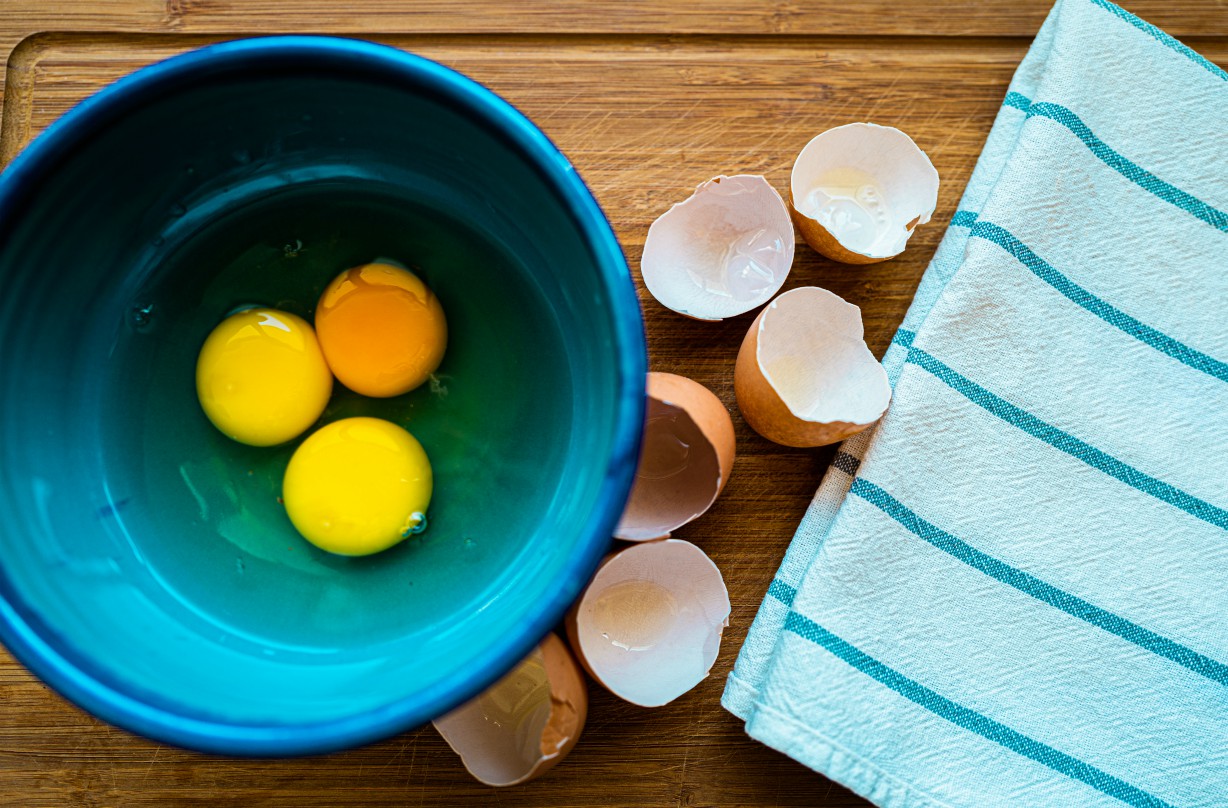
Crack the eggs into a bowl. Season with salt and pepper, add the milk or water, and whisk with a fork until combined.
How to make an omelette: Step 2
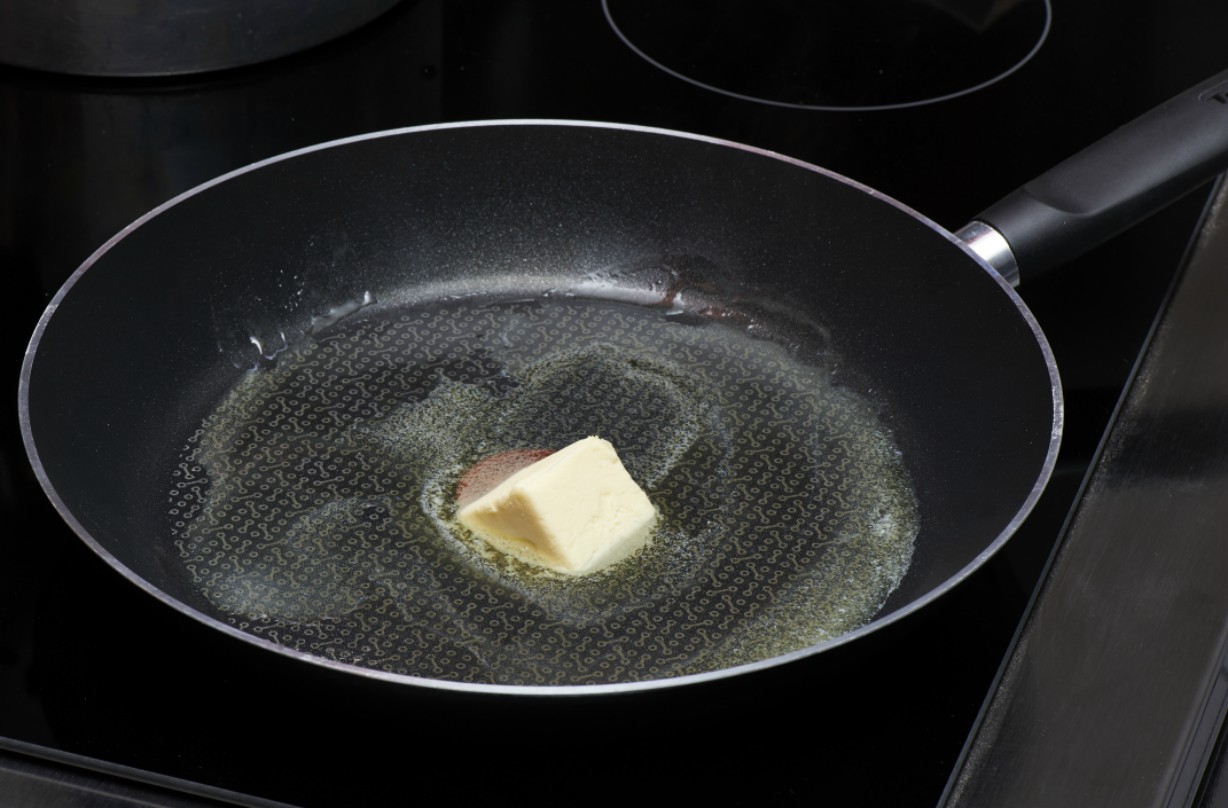
Heat the butter in a non-stick frying pan over a medium until melted and foaming.
How to make an omelette: Step 3
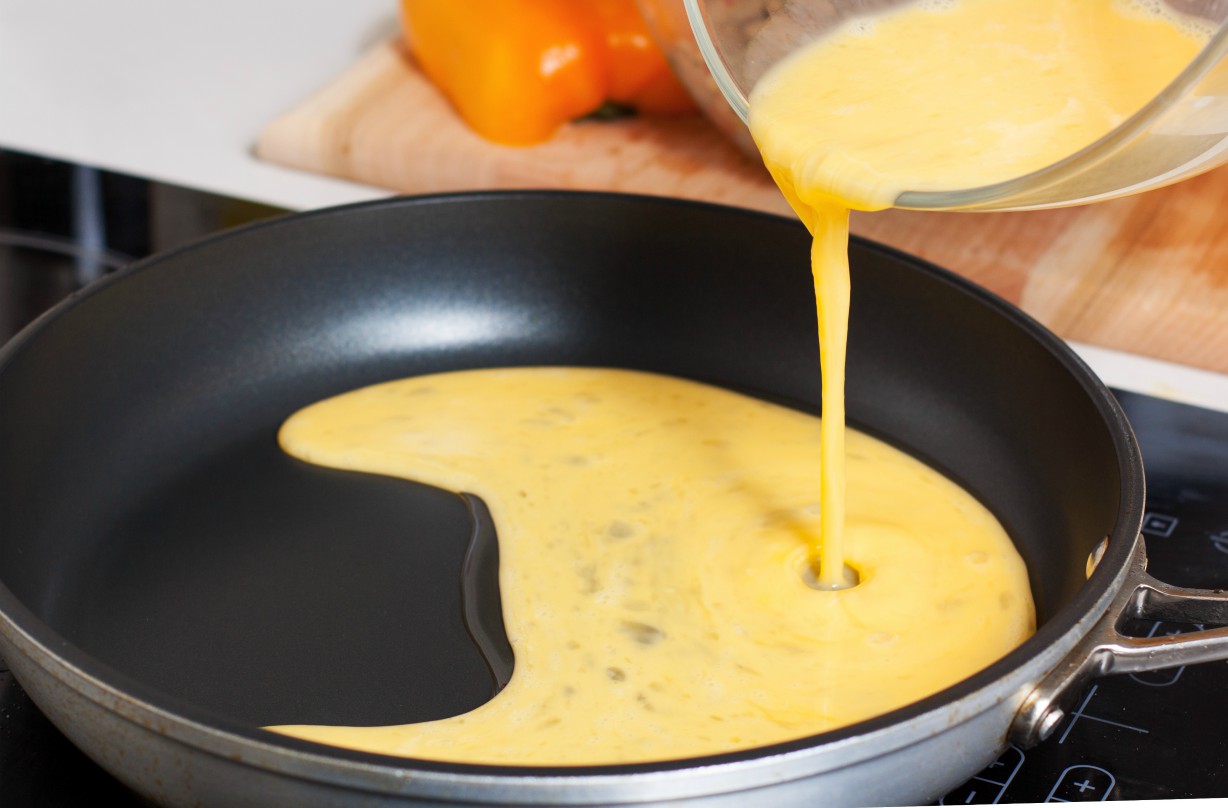
Pour in the egg mixture and as it starts to set on the base gently push the sides of the mixture towards the centre of the pan allowing the runny egg to flow to the edge of the pan. When the underneath is golden and the top is softly set you can proceed to the next step.
How to make an omelette: Step 4
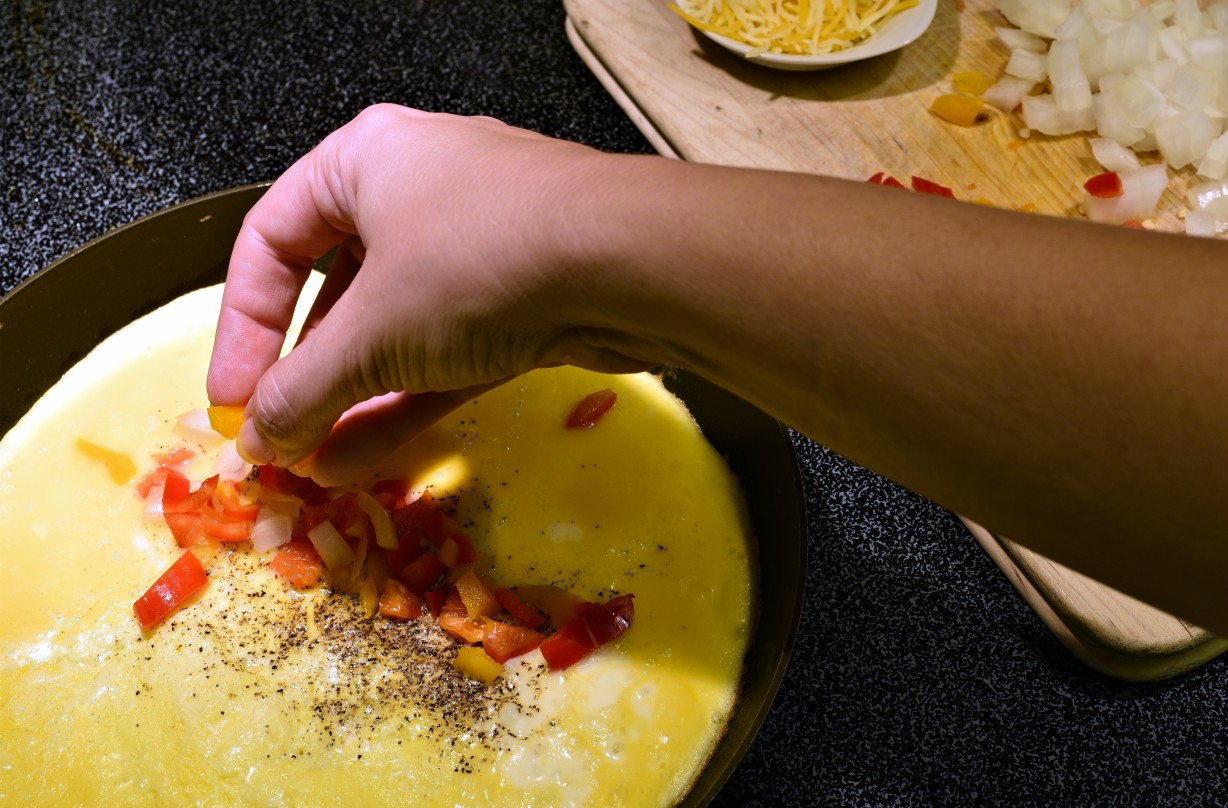
Add a sprinkle of salt and pepper, add any vegetables you would like to the top. Using a spatula, fold it in half and slide it onto a plate. You could also finish the omelette off under the grill but make sure you don't put the frying pan fully into the oven as the plastic handles will melt.
How to make an omelette: Step 5
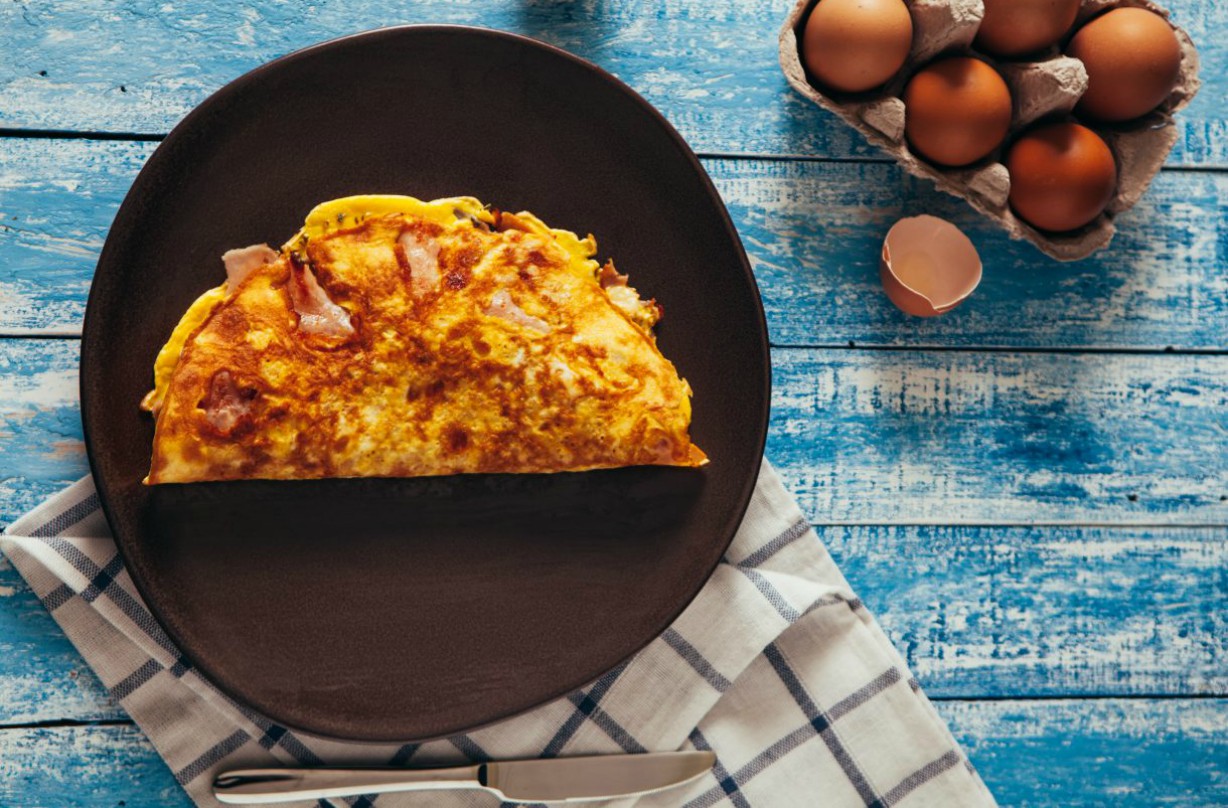
Sprinkle with ground pepper and serve with fresh salad leaves, chips, or crusty bread if liked.
Omelette pairings
A basic omelette is delicious but if you want to add some flavour to the dish, we've got plenty of recommendations.
Food Editor, Samuel Goldsmith likes the combination of gruyere and chestnut mushrooms, while Food Director Elisa Roche likes the approach of Maldivian and Sri Lanken chefs who finely chop their flavourings into a little mise-en-place.
Typical flavours include a combination of shallots, torn spinach leaves, green or red chillies, lemon juice, and a teaspoon of curry leaves.
Other tasty ingredients to try too include ham, bacon, peppers, chilli, tomatoes, chorizo, chicken, onion, smoked cheese, spinach, and more. For more recipe inspiration, take a look at our tasty omelette recipes.
What is the difference between an omelette and a Spanish omelette?
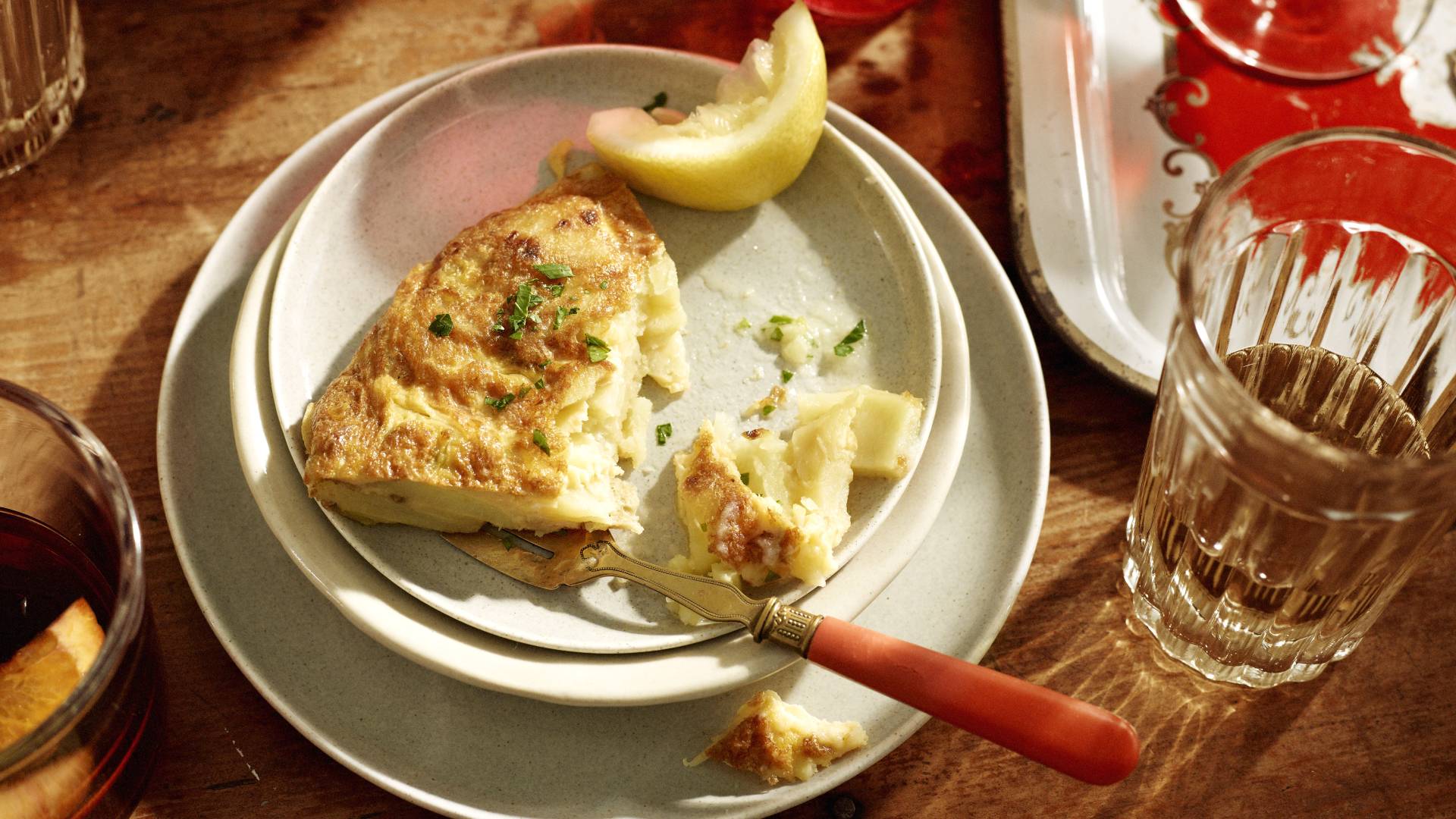
A Spanish omelette is a staple on many tapas menus and is a great example of humble, cheap ingredients being transformed into something incredibly delicious.
Traditionally made with just eggs and potatoes, other ingredients like onion are often included. Consequently, it's thicker than a classic omelette and is served open rather than folded.
It is a fantastic lunch option or a light dinner because it can be enjoyed hot or cold.
What is the difference between an omelette and a frittata?
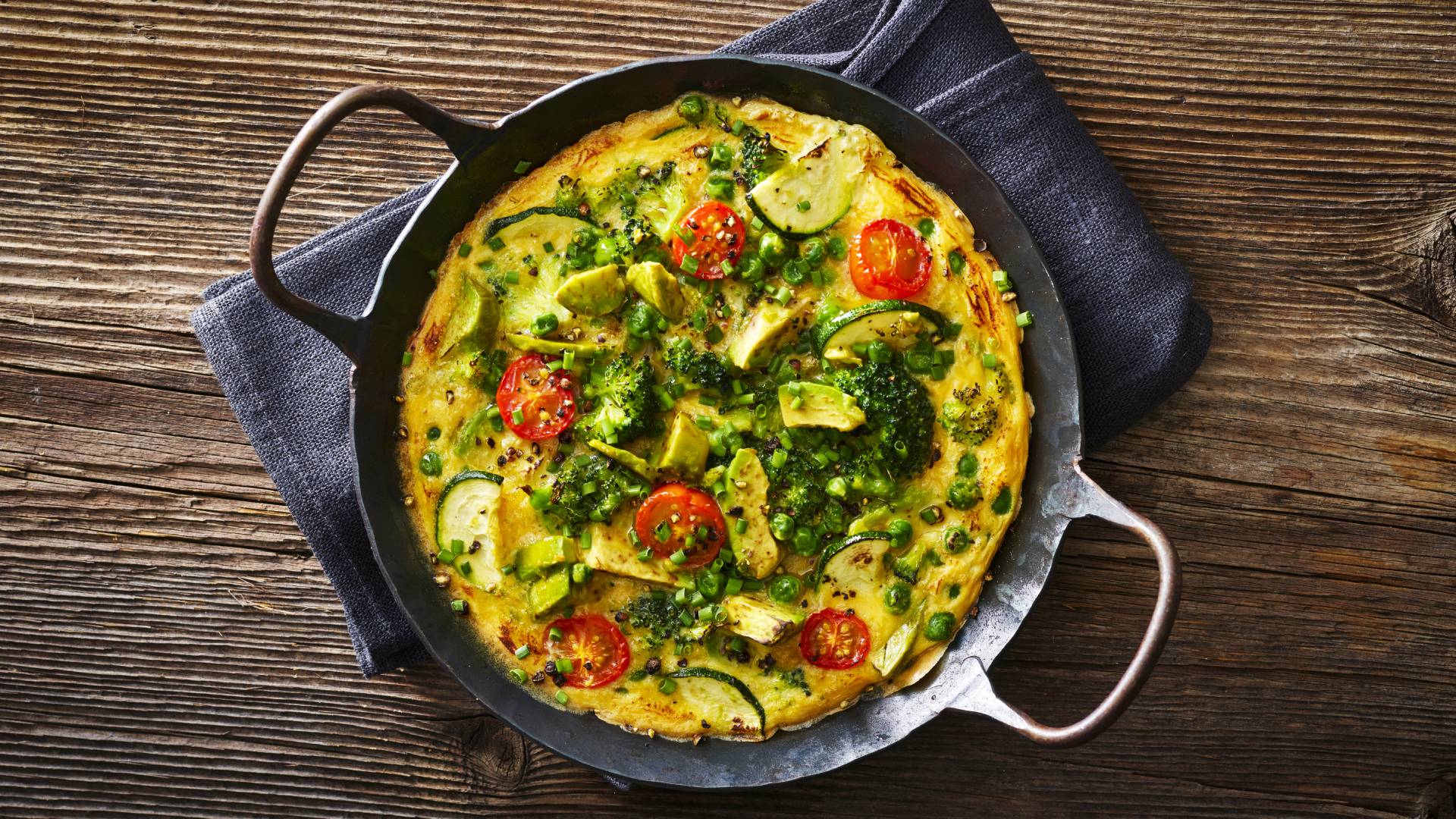
Frittata is the Italian equivalent of a Spanish omelette. Frittatas are thicker than omelettes and are cooked more gently in the frying pan. As a result, they take a little longer to cook but it's only a matter of minutes.
The best way to cook a frittata is to start it off in a frying pan as you would a normal omelette but finish it in a hot oven to cook all the way through. Make sure the pan you choose is oven safe.
Top tips for making an omelette
Which eggs are best for making an omelette?
Look for eggs stamped with the Lion Quality mark because they are produced to the highest standards of food safety. Other brands of egg we use and love include Clarence Court and St Ewe.
Is butter or oil best for making an omelette?
Our Food Editor Samuel is a firm advocate for cooking with butter because not only does it give a lovely golden colour, but it also adds a delicious flavour.
If you prefer to use olive oil or rapeseed oil they are both good options and if you have a really great non-stick pan, you may need nothing at all.
Can you use duck eggs to make an omelette?
Hens eggs are the default egg in most omelette recipes but duck eggs make for a delicious rich finish. Duck eggs are larger than hen eggs and so you don’t need as many. They have a big yolk and can add a little luxury to your dish.
Eggs should be kept in the fridge because the temperature is more controlled and it keeps the eggs fresher for longer, but you should bring them to room temperature before cooking.
How to avoid making a runny omelette
Instead of folding the omelette in the pan simply pop it under a hot grill and cook until golden and set. Senior Food Writer Jessica Ransom adds a sprinkling more cheese at this stage as it goes golden as it bubbles.
Jessica adds that you should never add salt to your mix. It’s best to season with salt once cooked and about to serve, otherwise, the salt draws water out of the mixture and can dilute your omelette. The same rule applies when cooking scrambled eggs.

Jessica is a freelance food writer, stylist and recipe tester. She previously worked as Senior Food Writer at Future. While at Future Jessica wrote food and drink-related news stories and features, curated product pages, reviewed equipment, and developed recipes that she then styled on food shoots. She is an enthusiastic, self-taught cook who adores eating out and sharing great food and drink with friends and family. She has completed the Level 1 Associate course at the Academy of Cheese and is continually building on her knowledge of beers, wines, and spirits.